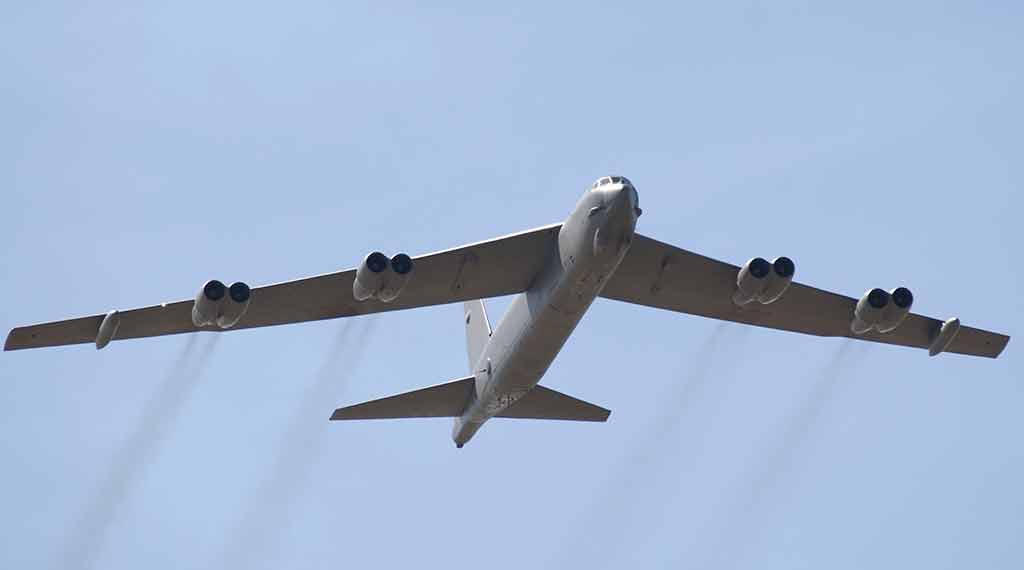
The B-52 Stratofortress is old, but it remains the mainstay of the U.S. Air Force’s bomber fleet.
In fact, the classic bomber could well fly for 100 years. The service is sure working hard to make that a reality, constantly upgrading the hulking “bomb truck” so that it retains an edge over enemy airframes.
Last week, manufacturer Boeing accepted the first B-52 active electronically scanned array radar (AESA) from Raytheon.
The Air Force bombers will use this advanced radar for system integration, testing and verification.
According to the vice president of Agile Radar Solutions at RDX “Outfitting the B-52 with an AESA radar replaces its current 1960s radar technology. With an AESA radar on board, the B-52 will gain improved navigation and targeting capabilities in higher threat areas.”
Introducing the B-52: Stratofortress
Following the Second World War, U.S. officials recognized the need for a strategic bomber capable of carrying out missions without relying on bases controlled by other nations.
As outlined by the Air Material Command, the new airframe would be designed to fulfill specific cruise, altitude, and combat radius requirements.
The Air Force considered bids from several big-name manufacturers. Boeing’s Model 462 was awarded the contract, and the B-52 was on its way to becoming a reality.
The Stratofortress’ entry into service coincided with the escalation of the Cold War between the U.S. and the Soviet Union. Capable of reaching high subsonic speeds at great altitudes, the airframe instantly became an icon of America’s Cold War deterrent.
The formidable bomber is designed to perform close-air support, strategic attack, offensive counter-air and maritime operations, among other specialties. Perhaps most important, the B-52 is capable of dropping the largest variety of weapons in the U.S. inventory. The bomber’s capabilities have greatly extended its stay in the Air Force. Analysts today believe the bomber could continue its service past 2040.
One key modification fitted on the B-52 has been underway for years. The internal weapons bay upgrade gives the bomber the ability to carry more joint-air-to-surface standoff missiles in addition to a miniature air launched decoy jammer variant.
The introduction of AESA radar technology is the latest in a series of enhancements being applied to the Stratofortress. Through near-speed-of-light beam steering, the sophisticated system delivers increased air-to-air and air-to-surface targeting and tracking capabilities.
As detailed by the Aviation Geek Club, “The new B-52 radar is based on AESA technologies developed from RTX’s pioneering AN/APG-79 radar. As the USAF migrates toward the two-bomber fleet of B-21s and B-52s the new AESA radar, in the form of the APG-79B4, is a “game changer” for the BUFF. The APG-79 is effectively the same radar as on the export version of the Navy F/A-18 fighter, with the array turned “upside down” so it looks more down at the ground than up at the sky.”
- US Stands Up New Drone Strike Force in the Middle East - December 9, 2025
- Has Russia Finally Sold its Su-35s to Iran? - December 2, 2025
- Iran’s Growing Missile Arsenal Is a Challenge for Israel - November 18, 2025
